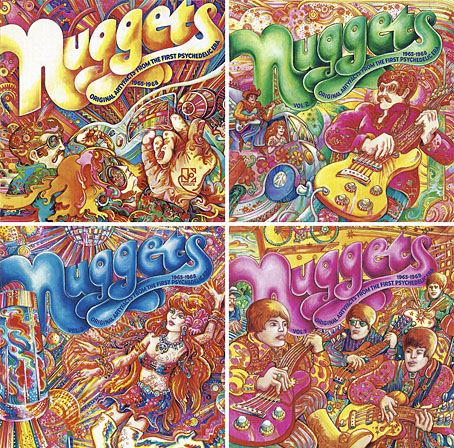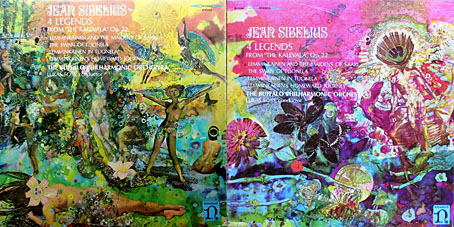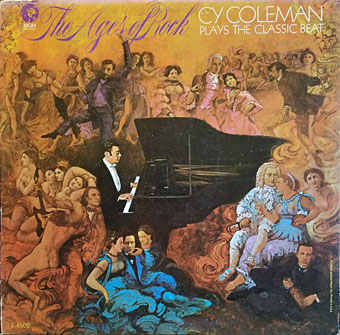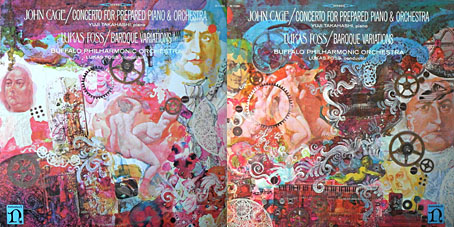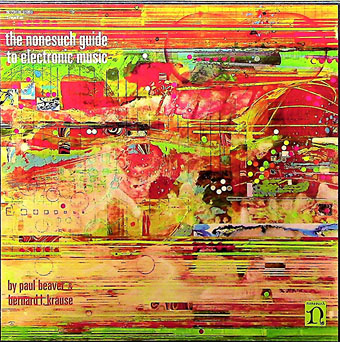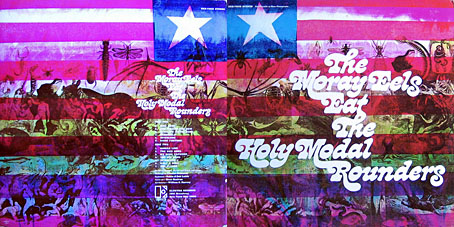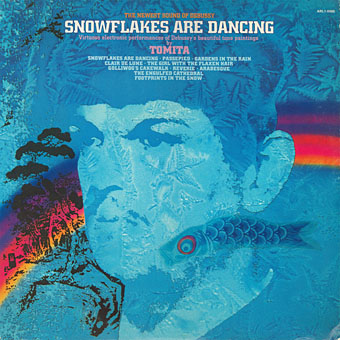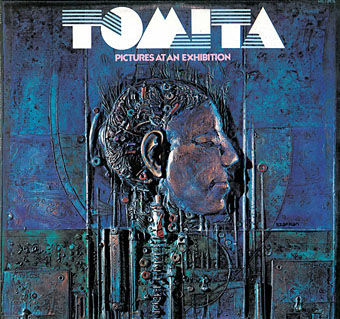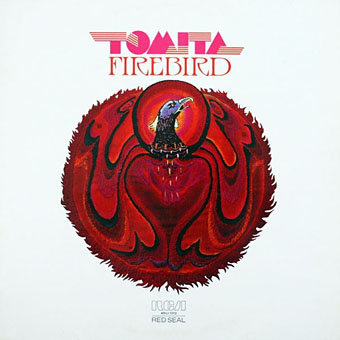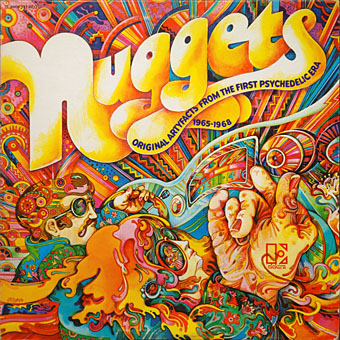
Nuggets: Original Artyfacts From The First Psychedelic Era 1965–1968 (1972).
Reading this article last week about Lenny Kaye’s Nuggets compilation I realised I’d never looked up the album’s cover artist, Abe Gurvin (1937–2012); this despite owning two copies of Kaye’s compilation, one of which, an expanded box of four CDs, includes additional Gurvin art (see below). Nuggets was released in 1972 on Elektra, a label for whom Gurvin worked regularly as a designer as well as an artist. The only other cover of his I definitely recall seeing before is for one of Mort Garson’s electronic novelty albums, Cosmic Sounds (credited to The Zodiac), although some of the classical recordings on Elektra’s Nonesuch imprint look vaguely familiar. Nonesuch were using vivid art and graphics on the covers of their classical albums from the mid-60s on, years in advance of rival labels; Gurvin, along with Bob Pepper, Gene Szafran and others, provided the cover paintings. In the 1980s many of these albums turned up cheap in British remainder shops, hence the familiarity, although I can’t say whether it was Gurvin’s art I remember seeing.
Disc art from the four-CD Nuggets box (1998).
The subtitle of the Nuggets album—”Original Artyfacts From The First Psychedelic Era 1965–1968″—always promised more than it delivered when only a quarter of the songs could be called psychedelic. Without Gurvin’s artwork providing a contextualising frame it’s hard to imagine the compilation sustaining its reputation as a psych classic, whatever the subtitle might suggest. Gurvin’s florid aesthetics were put to similar use elsewhere, not only on classical recordings. Some of the examples below are a result of attempts by art directors to give artists like Gene Pitney a trendy spin.
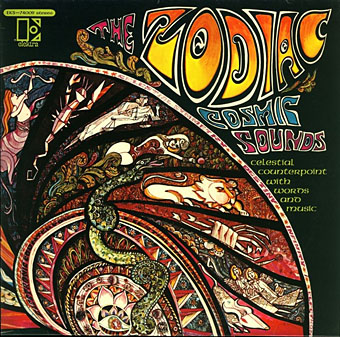
Cosmic Sounds (1967) by The Zodiac. “Must be played in the dark” says a note on the back cover.
Nuggets, incidentally, was beneficial in its influence even if its psychedelic quotient is lacking. Without its success there might not have been the 28 psych/garage compilations known as Pebbles, a bootleg series that retrieved from obscurity many minor bands and one-off singles; and without Pebbles we wouldn’t have had further imitations like Boulders (11 discs) and all the many series that followed, including my personal favourite, Rubble, a 20-disc collection of British psychedelic singles.
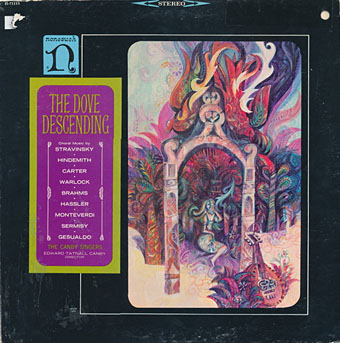
The Dove Descending: Choral Music (1966) by The Canby Singers.
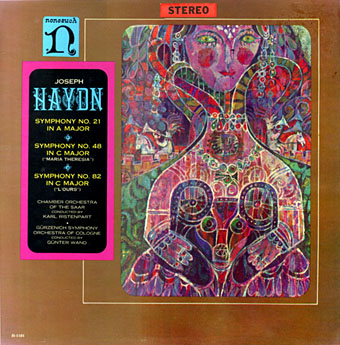
Haydn: Symphony No. 21 In A Major / Symphony No. 48 In C Major (“Maria Theresia”) / Symphony No. 82 In C Major (“L’Ours”); Chamber Orchestra Of The Saar, Karl Ristenpart / Gürzenich Symphony Orchestra Of Cologne, Günter Wand (1966).
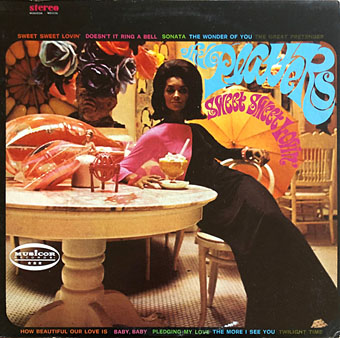
Sweet, Sweet Lovin’ (1968) by The Platters.
Gurvin’s contribution to this one is the hand-drawn title design.

